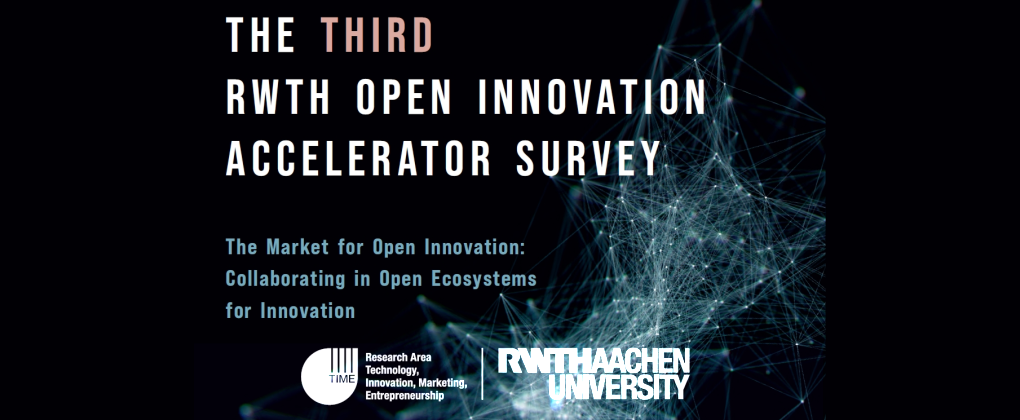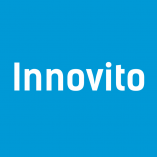The Market for Open Innovation 2020: Core Results & Findings of the Third RWTH OPEN INNOVATION ACCELERATOR SURVEY

Today open innovation has become a gold standard for successful new product and service development. Its core idea to engage an open, undefined network of people in form of an open call or open direct search is transferrable to a large variety of innovation tasks and industries. For the third time, this study explores that market of open innovation accelerators (OIA), organizations that help their clients to include external experts in all stages of an innovation project.
106 intermediaries were surveyed to investigate their open innovation services offered, project specifics, business model, productivity, and characteristics of their participant pool (61 provided us with a complete data set, for the remaining we used secondary data sources). In addition, we also interviewed OIA clients and solution providers, and integrated results from our award-winning Open Innovation Research Program at RWTH Aachen University, where we have been investigating open innovation and customer co-creation for over a decade. In total, this study is the largest inquiry of the global market of open innovation.
Get the full OIA Study 2020 with all profiles & data, DOWNLOAD OIA 2020 STUDY NOW!
Overall, we find that OIAs provide value to their clients. Among the service offerings, idea and solution contests – based on delegated search (crowdsourcing) – remain the dominant service category offered by OIAs today. But increasingly, software support, consultancy, or executive education enhance the OIAs’ offerings.
Typical outcomes of an OIA project range from generating original ideas and customer insights to sophisticated technical solution concepts, and sometimes even new business models. The majority of projects (63 percent) seek for external knowledge to generate better technical concepts and ideation. 78 percent of all OIA projects terminate with a successful knowledge exchange at the end of the project.
Selecting the right OIA for a specific task depends very much on the expected outcome. Not all OIAs are suited for every open innovation challenge. OIAs further differ with regard to the breadth, scope, and structure of their pool of potential participants, and the options for clients to control access to this pool and the interaction within a given project. Our study provides innovation managers a clear decision scheme how to select the right OIA and matches it to the OIAs suggested for the task.
OIAs build on the involvement of a large group of potential external contributors. Their services differ significantly regarding their community composition. On average, we find that OIAs have an average of 16,500 members in their existing pool of participants (their “community”). OIAs specializing on ideation or technical contests often have communities of more than 100,000 members. OIAs have to actively shape collaborations through excellent communication and transparency. We find that only a deep understanding of the needs and preferences of all partners provides the base for a sustainable OIA business model.
Aggregating the feedback from the respondents, we also derive estimates on the development of the open innovation market. The broad distribution of open innovation projects over various industry sectors demonstrates that this approach belongs to recent innovation practice.
When comparing the current sample with those in 2010 and 2013, we find a strong wave of acquisitions and mergers, which has taken place in the past years. Compared to five years ago, more than 40 percent of the OIAs have either been acquired by other players or do not exist any longer. At the same time, a new variation of OIAs enter the market, with a focus on exploiting the opportunities of artificial intelligence and machine learning.
The recent data reveals that the market for open innovation has passed the big hype in 2015 and is now in the stage of maturity and consolidation. This is reflected by decreasing project fees. When comparing the data from the past studies with the present findings, we find that the average cost for an OI project with an OIA decreased from €41,000 to €16,000. Nevertheless, project fees differ widely, ranging from free basic trials to over €100,000 (e.g. when including OI consulting service).
The main project cost driver remains personnel capacity. In the end, OIAs are no IT services or run “self-service internet platforms”, but a knowledge-intensive service business that requires skilled project managers and analysts.
The market in general stagnates. However, OIAs expect it to grow further. A self-assessment by the OIAs in this study reveals an estimate of the recent market volume of €1.3 billion. OIAs expect that this volume will increase until 2023 to €3 billion.
Download the full study.





































































EgyptInnovate site is not responsible for the content of the comments